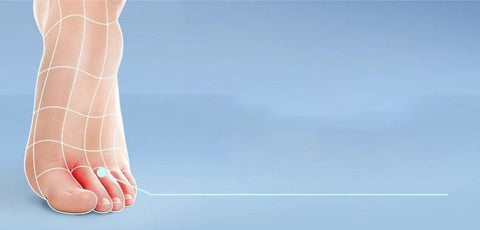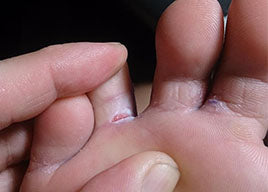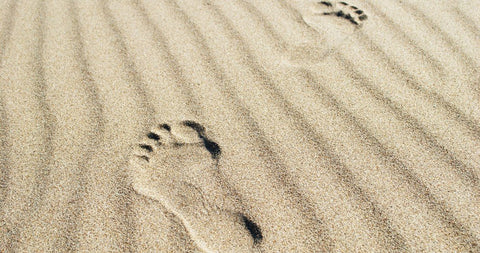
Get rid of Athlete’s foot: Causes and treatment
Whether you’ve been upping the ante with your fitness regime, spending more time in the pool and gym showers, or just prefer to live your life in trainers, we can create the perfect warm, dark and humid environments that fungus requires to thrive. And as annoying as athlete’s foot can be, there are simple treatments: topical creams, sprays and lotions. Below are our tips to help look after your hard-working feet so that you can stay active and try to avoid athlete's foot fungus.
This is not a diagnostic tool. The healthcare professional does not endorse Scholl products and were paid by the makers of Scholl for their time producing this video.
What is athlete’s foot?
Also known as tinea pedis, athlete’s foot is a contagious fungal infection that that can affect the skin in between the toes as well as the sole of the feet.
What are the symptoms of athlete’s foot?
It can appear as dry scaly skin so people could mistakenly assume they have dry skin. Athlete’s foot can make the soles and sides of feet itchy and sore. Common signs include: itchy white patches between your toes; red, sore and flaky patches on your feet, and skin that may crack and bleed. Athlete’s foot can also cause fluid-filled blisters.

What are the symptom triggers?
Athlete’s foot is very common and anyone can get it. It is estimated that up to one in four people have athlete’s foot* at some point in their lives. It is frequently seen among people who sweat more. However, anyone could get the infection from other people, for example if walking barefoot in changing rooms and showers.
*Figures from Patient.info Athlete’s foot. Accessed June 2019
What causes athlete’s foot?
Anyone can get athlete’s foot, but certain actions can increase the risk of getting or developing it. These include:
- Visiting public places barefoot (gym changing rooms, showers and swimming pools).
- Sharing socks, shoes or towels with an infected person.
- Wearing tight-fitting, closed-toe shoes.
- Keeping feet wet for long periods of time.
- Having sweaty feet.
- Suffering with a minor skin or nail injury on the feet – leading to a route into the skin.
Tips for avoiding and managing athlete’s foot
Treating athlete's foot can involve applying regular antifungal treatments (available from pharmacies) often around twice a day to the infected area for as long as the instructions say or as advised by a healthcare professional. Although symptoms tend to go quite quickly, you may need to apply the treatment for up to a fortnight after the rash has disappeared to help protect against reoccurrence. In the meantime, try not to scratch the affected skin as this may spread the infection to other areas of the body.
To help avoid athlete’s foot in the future:
- Alongside your Athlete’s Foot treatment, spray shoes after each use with Scholl’s Antifungal Shoe Spray to kill the fungus and help prevent recurrence (with continued use)
- If you’re going to the gym or the swimming pool wear flip flops in public areas.
- Dry your feet after washing them – particularly between toes (dab dry rather than rubbing them).
- Use a separate towel for your feet and wash it regularly.
- Take your shoes off when home.
- Wear clean socks every day – breathable cotton socks are best.
- Don’t share towels, socks or shoes with other people.
- Avoid wearing shoes that make your feet hot and sweaty.
- Don’t wear the same pair of shoes for two days in a row.
If the above advice and treatments don’t work, you’re in a lot of discomfort, your feet are red, hot and painful, you have diabetes or a weakened immune system, please contact your local healthcare professional such as a podiatrist for further medical advice.
Scholl Athlete's Foot cream contains Terbinafine. For the treatment of Athlete's foot. Always read the label.
To explore related products, click here.
UK/SC/0319/0049a
